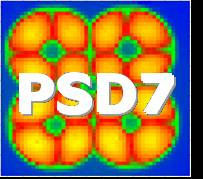Prof.
Colin Cunningham
(Director, Technological Development, Royal Obervatory)
13/09/2005, 13:30
Applications in Astronomy and Astrophysics
Invited Talk
The future requirements for Astronomy and Astrophysics sensor development covering
the sub-mm to X-ray range will be discussed.
Dr
Johannes Treis
(MPI Munich)
13/09/2005, 14:00
Applications in Astronomy and Astrophysics
Contributed Talk
Two dimensional back-illuminated (500 µm sensitive thickness) X-ray
pixel detectors with pixel sizes from 36 µm, 51µm, 75 µm to 150 µm
have been developed for applications in X-ray astronomy (0.1 keV to
20keV) and for wave front sensing in adaptive optics systems up to 1
µm wavelength in the NIR. In both applications the environmental
conditions are such that operation at ``warm...
Mr
Derek Ives
(UK Astronomy Technology Centre, Edinburgh)
13/09/2005, 14:15
Applications in Astronomy and Astrophysics
Contributed Talk
The technology of Infrared detectors has made significant advances
over the last decade evolving from their small size and number of
pixels to the present large format 2k x 2k pixel devices. These
large format near infrared detectors (1 – 2.5µm) are now routinely
available to the astronomical community and are based on HgCdTe
grown by either an LPE or MBE process on silicon or CdZnTe...
Mr
Hironobu Nishimura
(Kyoto University, Japan)
13/09/2005, 14:30
Applications in Astronomy and Astrophysics
Contributed Talk
We have developed a position-sensitive scintillation camera with an
area of 15×15cm2 for absorber of a Compton gamma-ray camera for
astronomy. It consists of 3×3 array of position sensitive PMTs
(Hamamatsu Flatpanel H8500). Each PMT has 8×8 anodes with a pitch of
6mm and is coupled to 8×8 array of pixelated 6×6×13mm3 GSO
scintillators.
We chose the GSO scintillator because it has...
